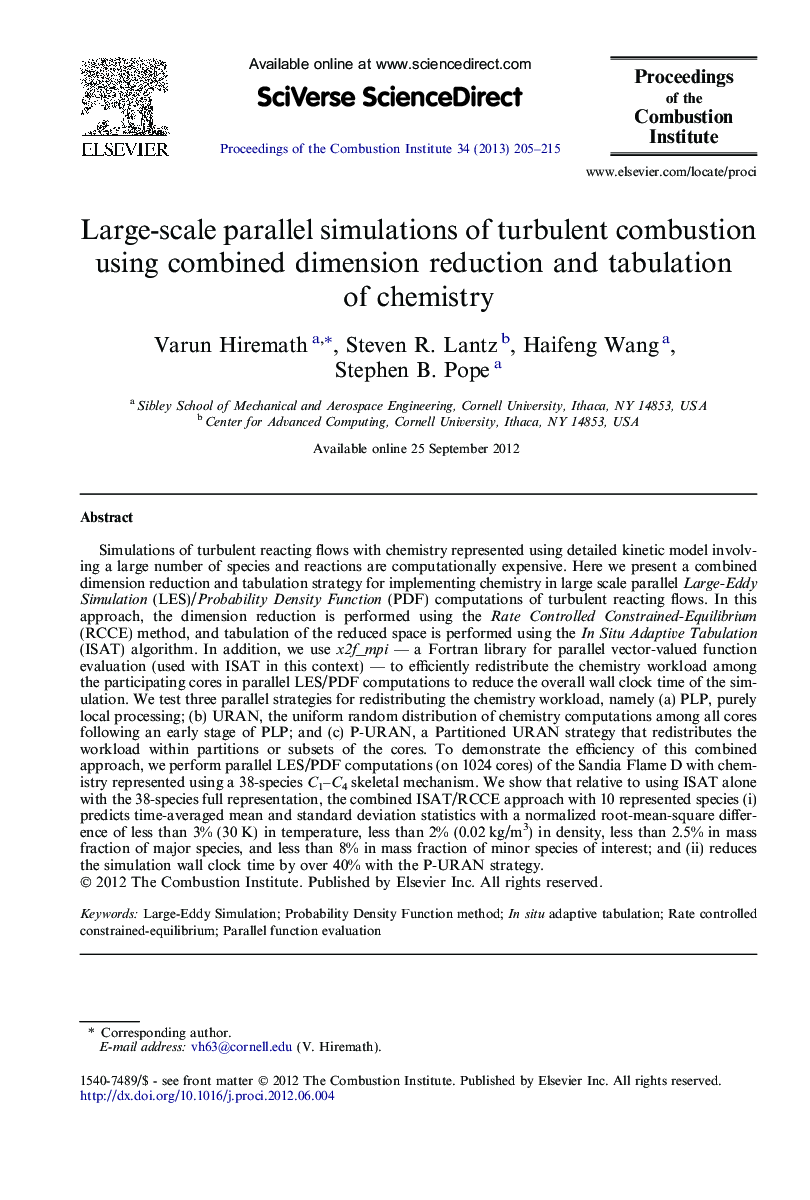| Article ID | Journal | Published Year | Pages | File Type |
|---|---|---|---|---|
| 241118 | Proceedings of the Combustion Institute | 2013 | 11 Pages |
Simulations of turbulent reacting flows with chemistry represented using detailed kinetic model involving a large number of species and reactions are computationally expensive. Here we present a combined dimension reduction and tabulation strategy for implementing chemistry in large scale parallel Large-Eddy Simulation (LES)/Probability Density Function (PDF) computations of turbulent reacting flows. In this approach, the dimension reduction is performed using the Rate Controlled Constrained-Equilibrium (RCCE) method, and tabulation of the reduced space is performed using the In Situ Adaptive Tabulation (ISAT) algorithm. In addition, we use x2f_mpi — a Fortran library for parallel vector-valued function evaluation (used with ISAT in this context) — to efficiently redistribute the chemistry workload among the participating cores in parallel LES/PDF computations to reduce the overall wall clock time of the simulation. We test three parallel strategies for redistributing the chemistry workload, namely (a) PLP, purely local processing; (b) URAN, the uniform random distribution of chemistry computations among all cores following an early stage of PLP; and (c) P-URAN, a Partitioned URAN strategy that redistributes the workload within partitions or subsets of the cores. To demonstrate the efficiency of this combined approach, we perform parallel LES/PDF computations (on 1024 cores) of the Sandia Flame D with chemistry represented using a 38-species C1–C4 skeletal mechanism. We show that relative to using ISAT alone with the 38-species full representation, the combined ISAT/RCCE approach with 10 represented species (i) predicts time-averaged mean and standard deviation statistics with a normalized root-mean-square difference of less than 3% (30 K) in temperature, less than 2% (0.02 kg/m3) in density, less than 2.5% in mass fraction of major species, and less than 8% in mass fraction of minor species of interest; and (ii) reduces the simulation wall clock time by over 40% with the P-URAN strategy.
